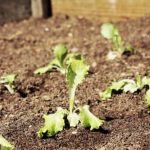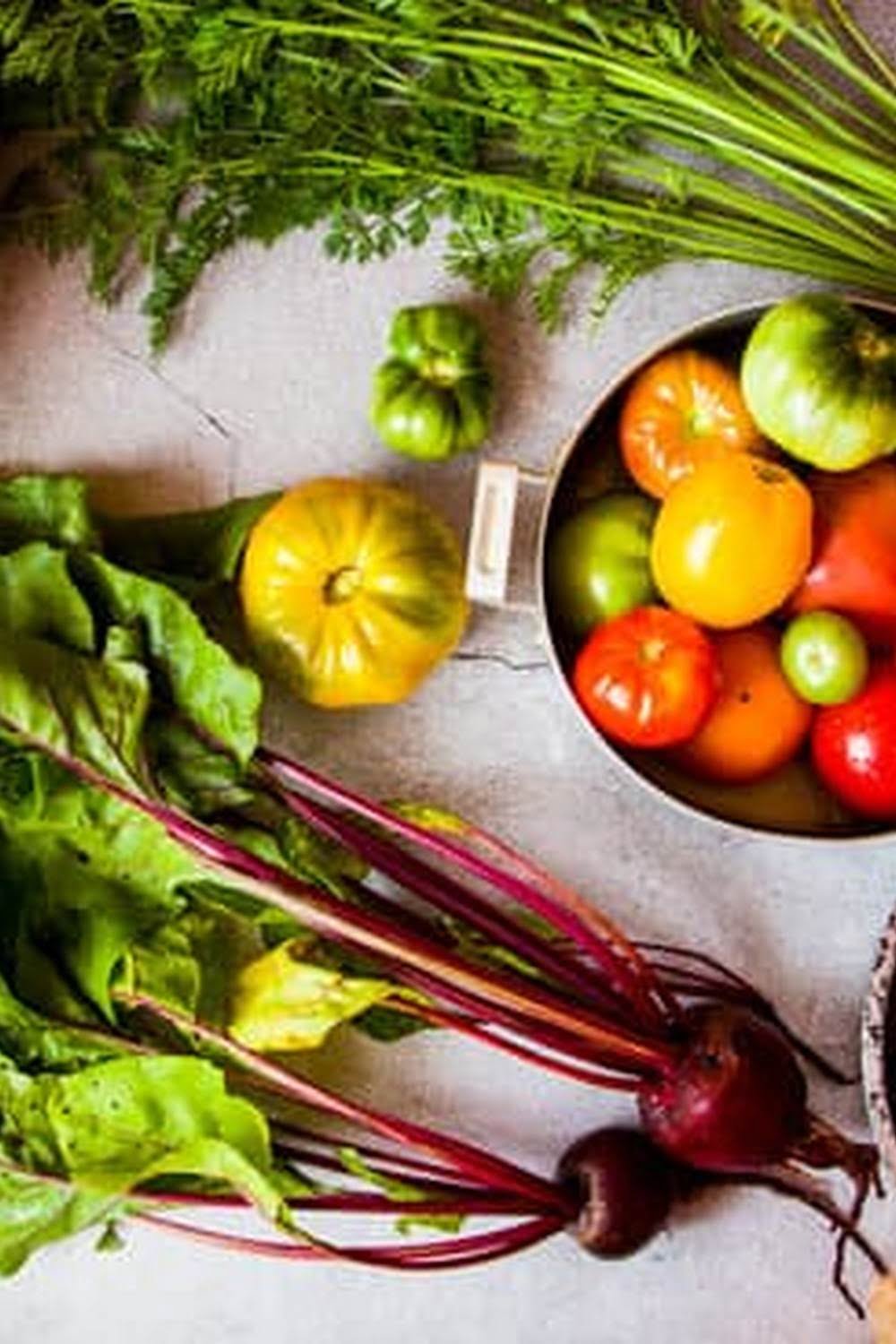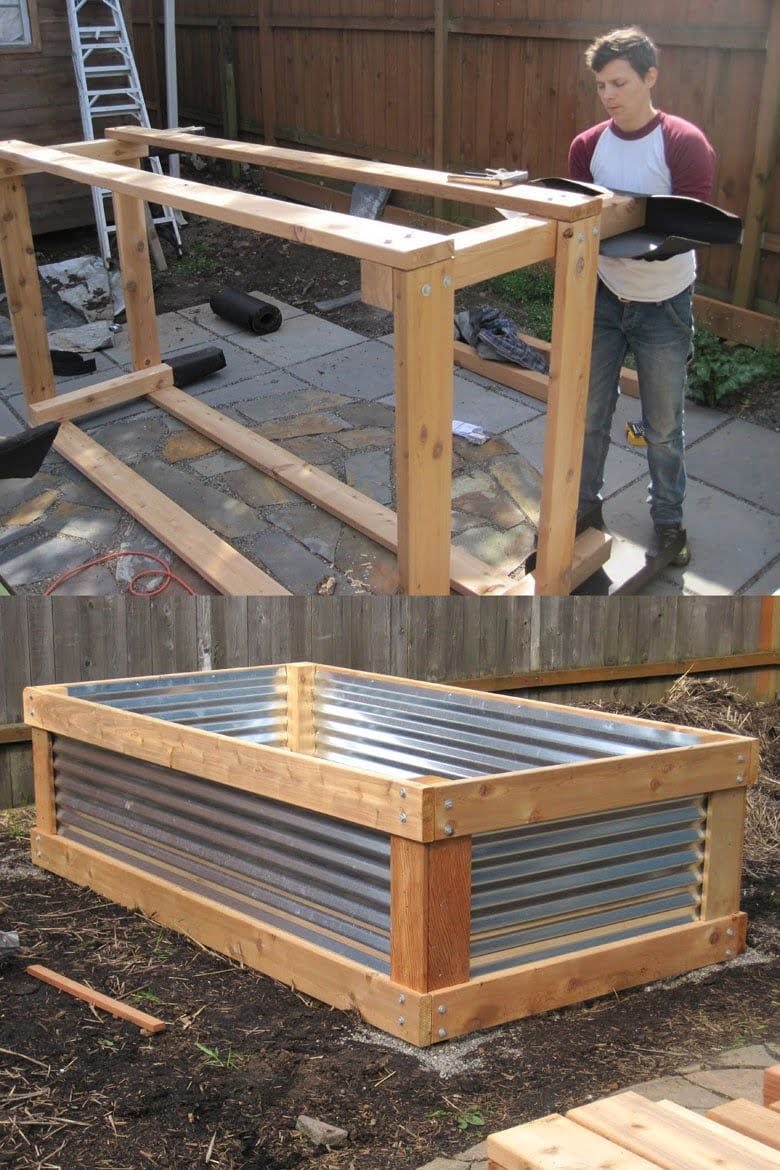Are you interested in starting a vegetable garden using raised beds? One of the most crucial factors to consider is the soil. The right soil mix can make all the difference in the success of your raised bed gardening project. This article will delve into the importance of soil in raised bed gardening, the characteristics of ideal soil for raised bed vegetable gardens, and tips for maintaining optimal soil health.
In raised bed gardening, the soil plays a vital role in providing essential nutrients and support for healthy vegetable growth. The quality of the soil directly impacts the overall success of your garden. Whether you are a beginner or experienced gardener, understanding the importance of soil in raised bed gardening is key to achieving bountiful harvests.
To ensure your vegetables thrive, it’s crucial to choose the right soil mix for your raised bed garden. This includes considering factors such as drainage, nutrient content, and texture. By understanding these aspects and making informed choices when it comes to your soil mix, you can create an ideal environment for your vegetable plants to flourish. In this article, we will explore how to select and amend the soil for optimal vegetable growth in raised bed gardens.
Benefits of Raised Bed Gardening for Vegetable Growth
Raised bed gardening has become increasingly popular among vegetable gardeners due to its numerous benefits for plant growth. One of the main advantages of raised bed gardening for vegetable growth is the improved soil quality. By using a raised bed, gardeners have better control over the soil composition, allowing them to create an ideal growing environment for their vegetables.
When it comes to soil for raised bed gardening vegetables, there are several key benefits that contribute to optimal plant growth. First, raised beds provide excellent drainage, preventing waterlogged soil which can lead to root rot and other issues. Additionally, the elevated position of raised beds allows the soil to warm up faster in the spring, promoting earlier planting and better germination for vegetable seeds.
Furthermore, the improved aeration and structure of the soil in raised beds promote healthier root systems and overall plant growth. The loose, well-draining nature of the soil in raised beds also reduces compaction and makes it easier for plants to access essential nutrients. These benefits combine to create an environment that is conducive to successful vegetable gardening.
| Benefit | Explanation |
|---|---|
| Improved Drainage | Raised beds prevent waterlogging, promoting healthy root systems. |
| Early Planting | The elevated position of raised beds allows for faster warming of the soil in spring. |
| Enhanced Aeration | The loose structure of soil in raised beds promotes healthier root systems. |
Characteristics of Ideal Soil for Raised Bed Gardening
Drainage and Aeration
One of the key characteristics of ideal soil for raised bed gardening is good drainage and proper aeration. The soil in raised beds should be loose and well-draining to prevent waterlogging, which can lead to root rot and other issues. This allows oxygen to reach the roots, promoting healthy plant growth. To improve drainage, consider adding organic matter such as compost or peat moss to the soil mix.
Soil Texture and Structure
The texture and structure of the soil play a crucial role in the success of raised bed gardening. The ideal soil should have a light, friable texture that allows roots to penetrate easily. It should also have good structure, providing support for plants while allowing for proper root development. A combination of sandy loam, peat moss, and compost can help create the perfect soil mix for raised bed vegetable gardens.
Nutrient Content
In addition to good drainage and texture, ideal soil for raised bed gardening should be rich in nutrients. This is especially important for vegetable growth, as they require a range of essential nutrients for healthy development. Adding organic fertilizers or well-decomposed compost to the soil can help provide the necessary nutrients for optimal vegetable growth. Regular soil testing can also help you determine if any specific nutrient deficiencies need to be addressed in your raised bed garden.
Choosing the Right Soil Mix for Raised Bed Vegetable Gardens
When it comes to raised bed vegetable gardening, the importance of selecting the right soil mix cannot be overstated. The quality of the soil will directly impact the health and yield of your vegetable plants. The ideal soil for raised bed gardening vegetables should be well-draining, loose, and fertile.
One popular option for a raised bed soil mix is a combination of topsoil, compost, and organic matter such as peat moss or coconut coir. This blend provides a good balance of nutrients, moisture retention, and aeration for vegetable roots to thrive. It’s important to avoid using regular garden soil, as it can become compacted in a raised bed and hinder proper root growth.
Another consideration when choosing a soil mix for raised bed vegetable gardens is pH levels. Most vegetables prefer slightly acidic soil with a pH range between 6.0 and 7.0. Testing your soil before planting can help determine if any amendments are needed to achieve the ideal pH level for your vegetables.
It’s also essential to consider the specific needs of the vegetables you plan to grow when selecting a soil mix for your raised beds. Some plants may require more nitrogen or potassium, while others may need better drainage conditions. Tailoring your soil mix to meet these requirements will contribute to healthier plants and higher yields in your raised bed garden.
| Benefit | Consideration |
|---|---|
| Well-draining | Avoid using regular garden soil |
| Good balance of nutrients | Test pH levels before planting |
| Tailored to specific plant needs | Achieve ideal pH level for vegetables |
Tips for Amending Soil in Raised Beds for Optimal Vegetable Growth
In order to ensure optimal vegetable growth in raised bed gardening, it is important to properly amend the soil to provide the necessary nutrients and support for healthy plant development. By understanding the specific needs of the plants being grown, gardeners can make informed decisions about how to best amend their soil for successful vegetable cultivation.
Assessing Soil Composition and Quality
Before amending the soil in a raised bed garden, it is crucial to assess its composition and quality. Conducting a soil test can provide valuable information about the pH level, nutrient content, and organic matter present in the soil. This will help determine what amendments are needed to create an optimal growing environment for vegetables. Additionally, observing the drainage capabilities of the soil can influence decisions regarding amending materials.
Selecting Amendments for Improved Soil Structure
One of the key goals when amending soil in a raised bed for vegetable growth is to improve its structure. Adding organic matter such as compost, well-rotted manure, or leaf mold can enhance soil fertility and promote beneficial microbial activity. Additionally, incorporating materials like perlite or vermiculite can improve drainage and aeration in heavier soils, while adding peat moss can help retain moisture in sandy soils.
Amending Soil According to Vegetable Needs
Different vegetables have varying nutritional requirements and preferences for soil pH levels. When amending the soil in raised beds for optimal vegetable growth, it is important to consider the specific needs of the plants being cultivated. For example, brassicas like broccoli and cabbage prefer alkaline soil, while root vegetables such as carrots and radishes thrive in slightly acidic conditions. Amending the soil accordingly will contribute to healthier plants and better yields.
By carefully assessing the existing soil composition, selecting appropriate amendments, and considering the specific needs of different vegetables, gardeners can effectively amend their raised bed garden soil for optimal vegetable growth. This proactive approach sets the stage for vibrant plants with robust root systems that are better equipped to resist pests and diseases while producing bountiful harvests.
Maintaining Soil Health in Raised Bed Gardens
When it comes to maintaining soil health in raised bed gardens, proper watering, mulching, and fertilizing are essential practices to ensure optimal growth and productivity of vegetables. Here are some tips for effectively managing the soil in your raised bed garden:
- Watering: One of the key factors in maintaining soil health is proper watering. Over-watering can lead to waterlogged soil, while under-watering can cause the soil to dry out and negatively impact plant growth. It is important to monitor the moisture levels in the soil and water accordingly. Consider installing a drip irrigation system or using a soaker hose to provide consistent moisture to the plants without causing soil compaction.
- Mulching: Mulching is an important practice in maintaining soil health in raised bed gardens. Applying a layer of organic mulch such as straw, grass clippings, or shredded leaves helps retain moisture, suppress weeds, regulate soil temperature, and improve overall soil structure. As the mulch breaks down over time, it also adds organic matter to the soil, which is beneficial for plant growth.
- Fertilizing: Proper fertilization is crucial for ensuring that your vegetables receive essential nutrients for healthy growth. Before planting your crops, incorporate a balanced fertilizer into the soil according to package instructions. Additionally, consider using organic fertilizers such as compost or well-aged manure to provide long-term benefits to the soil and promote microbial activity.
By implementing these practices for maintaining soil health in your raised bed garden, you can create a favorable environment for vegetable growth and optimize the productivity of your gardening efforts.
Common Soil Problems in Raised Bed Vegetable Gardens and How to Solve Them
Raised bed gardening offers many benefits for growing vegetables, but like any other gardening method, it also comes with its challenges. One of the most common issues that gardeners encounter in raised bed vegetable gardens is soil problems. Here are some of the typical soil problems you might face in your raised bed garden and how to solve them:
1. Poor drainage: If your raised bed soil becomes waterlogged after heavy rain or watering, it can cause root rot and other issues for your vegetables. To improve drainage, consider incorporating organic matter such as compost or perlite into the soil mix.
2. Nutrient deficiencies: Over time, the nutrients in your raised bed soil can become depleted, leading to stunted growth and poor vegetable production. To address this issue, regularly amend your soil with organic fertilizer or compost to replenish essential nutrients for healthy plant growth.
3. Soil compaction: Compacted soil can hinder root development and restrict airflow to the roots of your vegetables. To combat soil compaction in raised beds, regularly loosen the soil using a hand tool or implement no-till gardening practices to maintain a loose, aerated soil structure.
By being proactive and addressing these common soil problems, you can ensure that your raised bed vegetable garden continues to thrive and produce bountiful harvests for years to come. Remember that healthy, nutrient-rich soil is the foundation for successful gardening in raised beds.
Conclusion
In conclusion, the success of raised bed gardening for growing vegetables heavily relies on the quality and management of the soil. As discussed in this article, the characteristics of ideal soil for raised bed gardening include good drainage, aeration, and nutrient-rich composition. Choosing the right soil mix, amending it as needed, and maintaining its health through watering, mulching, and fertilizing are all crucial steps in ensuring optimal vegetable growth.
It is important to recognize that good soil management is key to successful raised bed gardening. By understanding the specific needs of your vegetable plants and regularly monitoring the condition of the soil, you can prevent and address common soil problems such as compaction, nutrient deficiencies, and pH imbalance. With proper care and attention to the soil in your raised beds, you can create an environment that promotes healthy root development, strong plant growth, and bountiful harvests.
In summary, investing time and effort into managing the soil in your raised bed vegetable garden will pay off in the form of thriving plants and abundant produce. Whether you are a novice or experienced gardener, never underestimate the significance of good soil management for achieving success in your raised bed gardening endeavors. Keep these principles in mind as you plan and care for your garden’s soil, and enjoy the fruits – or rather vegetables – of your labor.
Frequently Asked Questions
What Is the Best Soil Mix for Raised Vegetable Beds?
The best soil mix for raised vegetable beds is one that is well-draining, fertile, and rich in organic matter. A good mix typically consists of equal parts of compost, topsoil, and aeration material like perlite or vermiculite.
What Do You Fill a Raised Vegetable Garden Bed With?
Raised vegetable garden beds are typically filled with a mixture of topsoil, compost, and aeration material such as perlite or peat moss. This combination allows for good drainage, moisture retention, and nutrient availability for the plants.
What Kind of Soil Do You Use for a Vegetable Garden?
For a vegetable garden, it’s important to use soil that is well-draining and rich in organic matter. Typically, a mix of topsoil and compost works well for most vegetable crops. It’s also essential to test the soil’s pH levels to ensure it’s suitable for growing vegetables.

If you’re looking to get into vegetable gardening, or are just looking for some tips on how to make your current garden better, then you’ve come to the right place! My name is Ethel and I have been gardening for years. In this blog, I’m going to share with you some of my best tips on how to create a successful vegetable garden.





